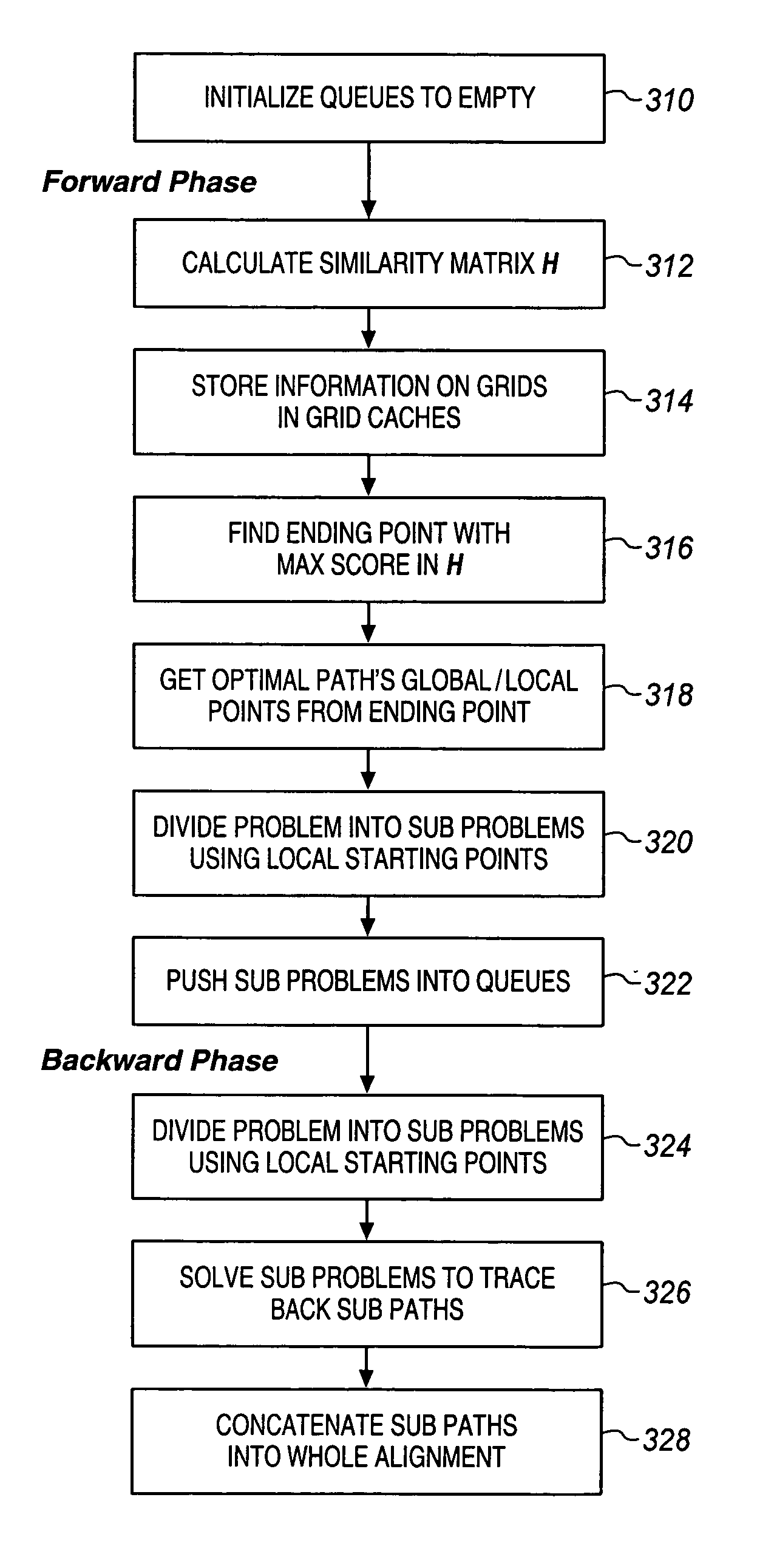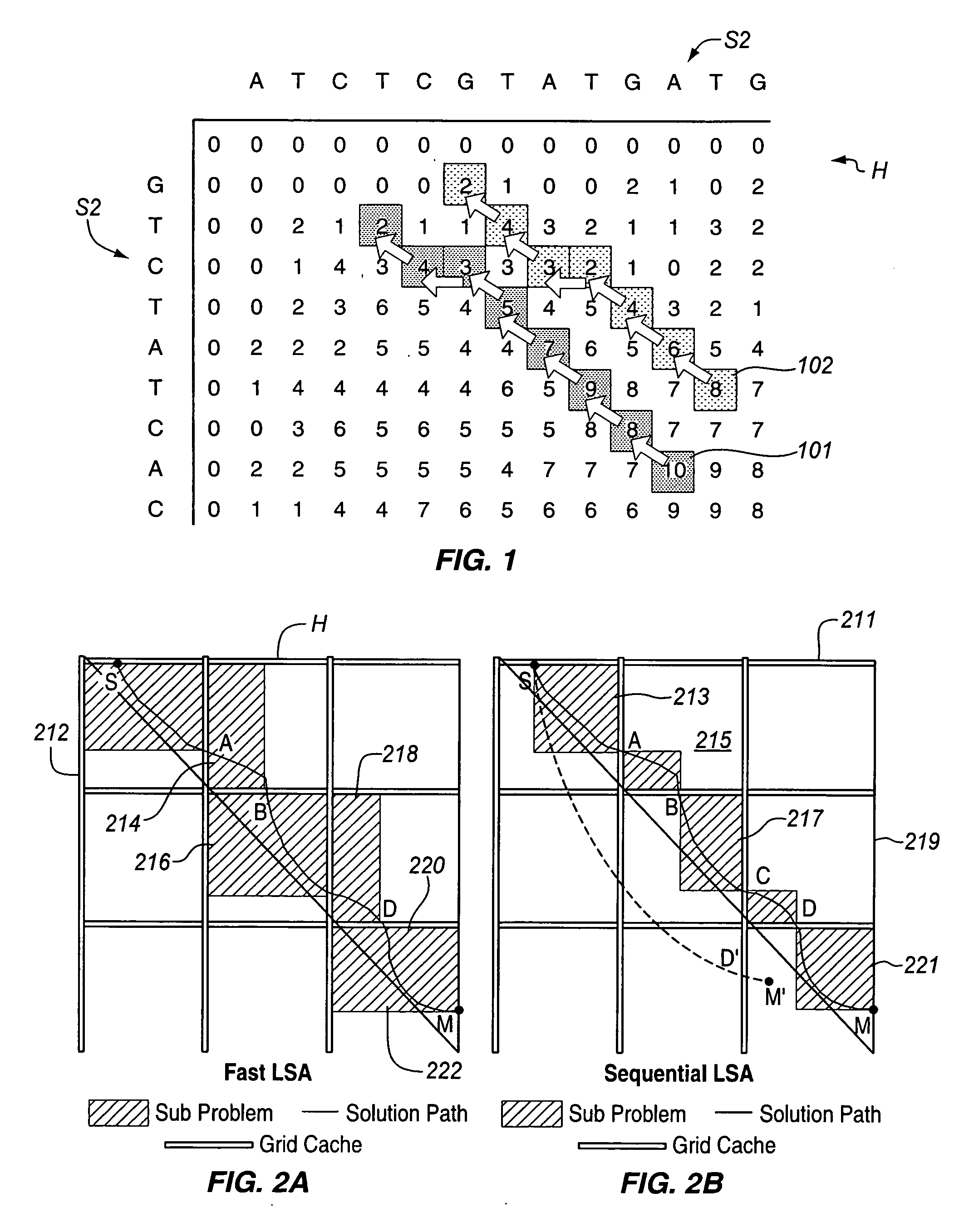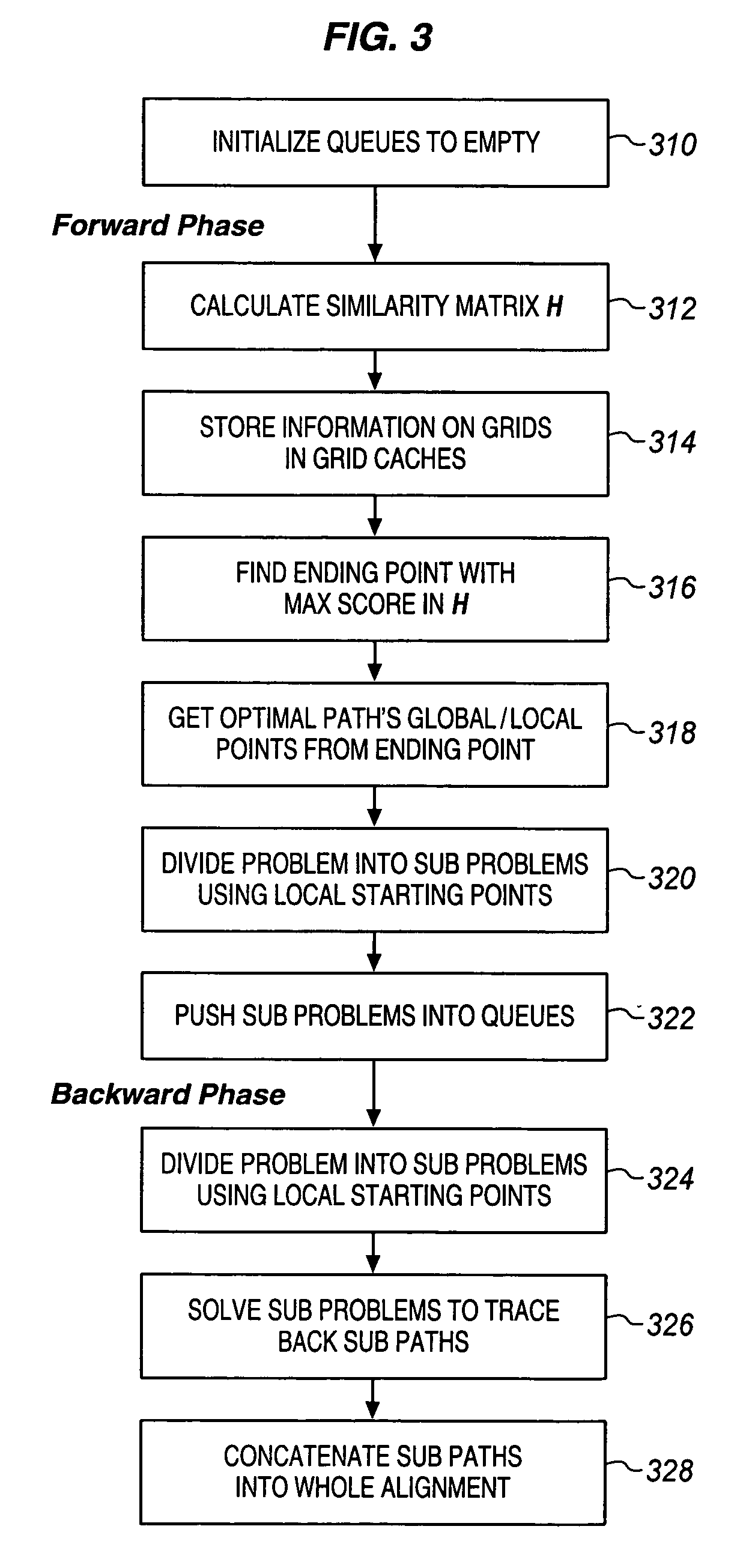Fast alignment of large-scale sequences using linear space techniques
a linear space and large-scale sequence technology, applied in the direction of instruments, material analysis, measurement devices, etc., can solve the problems that require space and time still pose a challenge for large-scale sequence alignmen
- Summary
- Abstract
- Description
- Claims
- Application Information
AI Technical Summary
Benefits of technology
Problems solved by technology
Method used
Image
Examples
Embodiment Construction
1. Introduction
[0020] In one embodiment, the invention for large-scale sequence alignment may be referred to as “SLSA” (Sequential Linear Space Algorithm). In SLSA, re-calculations are reduced by grid caches and global and local start points thereby improving overall performance. First, a whole similarity matrix H(i, j) is calculated in a linear space. The information on grids, including global and local start points and similarity values, are stored in grid caches. Then, the whole alignment problem is divided into several independent sub-problems. If a sub-problem is small enough, it will be solved directly. Otherwise, it will be further decomposed into several smaller sub-problems until the smaller sub-problems may be solved in the available memory. Using the global start points, several (k) near-optimal non-intersecting alignments between the two sequences can be found at the same time.
[0021] The grid cache and global and local start points used in SLSA, are efficient for larg...
PUM
 Login to View More
Login to View More Abstract
Description
Claims
Application Information
 Login to View More
Login to View More - R&D
- Intellectual Property
- Life Sciences
- Materials
- Tech Scout
- Unparalleled Data Quality
- Higher Quality Content
- 60% Fewer Hallucinations
Browse by: Latest US Patents, China's latest patents, Technical Efficacy Thesaurus, Application Domain, Technology Topic, Popular Technical Reports.
© 2025 PatSnap. All rights reserved.Legal|Privacy policy|Modern Slavery Act Transparency Statement|Sitemap|About US| Contact US: help@patsnap.com



